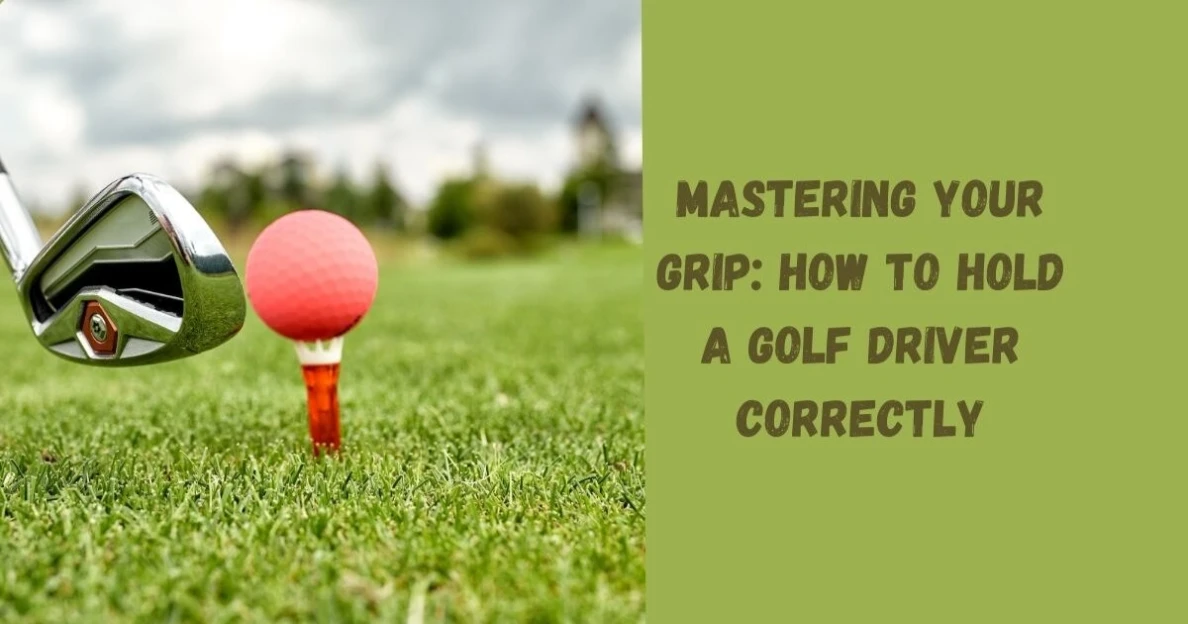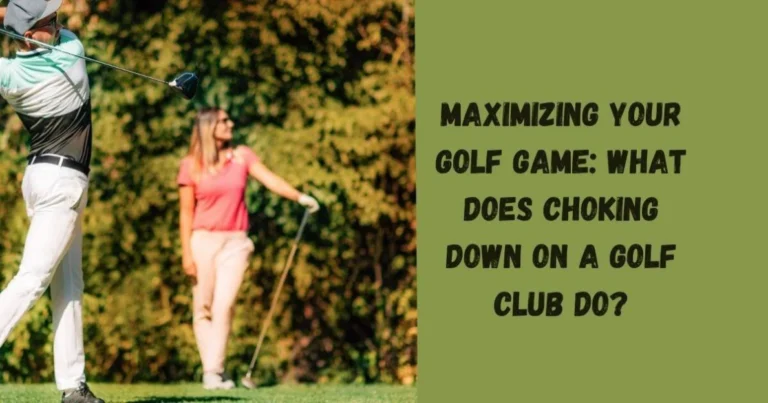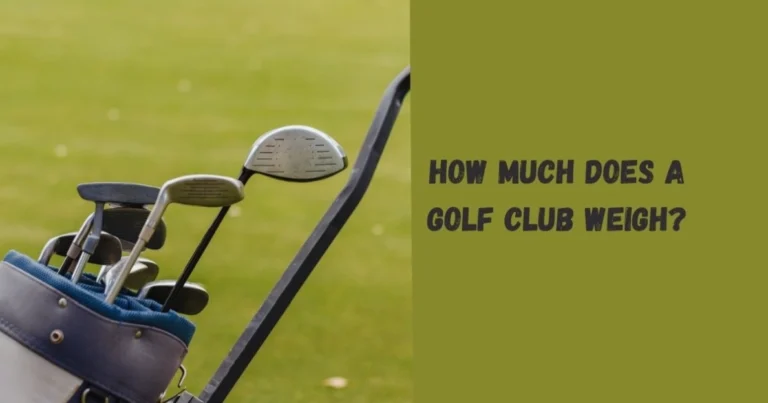How to Hold a Golf Driver Correctly
A proper grip is essential for achieving consistency and control in your golf game. In this guide, we will explore how to hold a golf driver correctly, focusing on techniques for right-handed players and tips to improve your overall performance.
Understanding the Basics of a Golf Driver
What is a Golf Driver?
A golf driver is one of the most important clubs in a golfer’s bag, designed for long-distance shots from the tee. It typically has the longest shaft and the largest clubhead, which helps generate maximum distance. The driver is usually used on the first stroke of each hole, setting the stage for the rest of the play.
Importance of the Driver in Your Golf Bag
The driver is essential for achieving long, straight drives, which can significantly influence your overall score. A good drive sets up the next shot for a potential birdie or par, making it a crucial part of your game. Mastering the use of a driver can dramatically improve your performance on the course.
Overview of Different Golf Driver Lengths and Their Impact
Golf driver lengths can vary, typically ranging from 43 to 46 inches. The length of the driver affects both control and distance. A longer driver can increase your swing speed and distance, but it might be harder to control. Conversely, a shorter driver offers more control but might sacrifice some distance. Finding the right balance is key to optimizing your performance.
How to Hold a Golf Driver for Right-Handed Players
Step-by-Step Guide on How to Hold a Golf Driver Right Handed
- Start with Your Left Hand: Place your left hand (for right-handed players) on the grip, ensuring the grip runs diagonally across your fingers and the pad of your hand. Your thumb should point down the shaft.
- Add Your Right Hand: Place your right hand below your left, covering your left thumb with your palm. Your right pinkie should rest between your left index and middle fingers if using an overlapping grip.
- Align Your Hands: Both hands should work together, forming a single unit. Your thumbs should point down the shaft, creating a V shape between your thumbs and index fingers that points towards your right shoulder.
- Grip Pressure: Maintain a light but firm grip. Avoid squeezing too tightly as it can restrict your swing and lead to tension.
Importance of Grip Pressure and Its Effects
Grip pressure is crucial for a smooth and controlled swing. Holding the driver too tightly can lead to tension, reducing your swing speed and control. Conversely, a grip that’s too loose can cause the club to twist during the swing, leading to inaccurate shots. Aim for a comfortable, medium grip pressure to maintain control without tension.
Common Grips in Golf
Overlapping Grip
The overlapping grip, also known as the Vardon grip, is the most common grip used by golfers. Here, the pinkie of your right hand overlaps the index finger of your left hand. This grip provides control and stability, making it a popular choice among professionals.
Interlocking Grip
In the interlocking grip, the pinkie of your right hand interlocks with the index finger of your left hand. This grip is often used by players with smaller hands, as it provides a secure hold and helps maintain unity between the hands.
Ten-Finger Grip
The ten-finger grip, or baseball grip, involves all ten fingers holding the club, similar to how you would hold a baseball bat. This grip can generate more power but may sacrifice some control. It’s often used by beginners or players with weaker hands.
Tips for Improving Your Golf Driver Grip
Golf Driver Tips for a Better Grip
- Check Your Hand Position: Ensure your hands are placed correctly on the club, with both thumbs pointing down the shaft.
- Maintain a Neutral Grip: Avoid turning your hands too far to the left or right. A neutral grip helps keep the clubface square at impact.
- Practice Consistently: Regular practice helps reinforce a proper grip. Spend time at the driving range focusing on your grip and swing.
Adjusting Your Grip Based on Swing Style
Different swing styles may require slight adjustments to your grip. Experiment with minor changes in hand position and pressure to find what works best for your swing. Pay attention to how these adjustments affect your ball flight and consistency.
Importance of Regular Practice and Adjustments
Consistent practice is key to mastering your golf driver grip. Regularly review and adjust your grip to ensure it remains effective. Use practice sessions to experiment with different grips and find the one that offers the best combination of control and power.
How to Use a Golf Driver with the Correct Grip
Step-by-Step Guide on How to Use a Golf Driver Effectively
- Setup: Position the ball just inside your front foot, with your feet shoulder-width apart.
- Grip: Hold the driver with a proper grip, ensuring both hands work together.
- Backswing: Initiate a smooth takeaway, rotating your shoulders while keeping your lower body stable.
- Downswing: Transition smoothly into the downswing, leading with your hips and maintaining a steady tempo.
- Follow-Through: Allow your body to rotate fully, finishing with your weight on your front foot and the club over your shoulder.
Impact of Grip on Swing Mechanics
The way you hold the driver affects your swing mechanics and ball flight. A proper grip helps maintain a consistent swing path, leading to more accurate and powerful shots. It also reduces the likelihood of common errors such as slices or hooks.
Drills to Practice and Improve Your Grip
- Grip Check Drill: Regularly check your grip during practice sessions to ensure consistency.
- Alignment Drill: Use alignment sticks to practice your setup and grip, ensuring proper hand placement and posture.
- Swing Path Drill: Focus on maintaining a consistent swing path by practicing with a neutral grip.
Frequently Asked Questions (FAQs)
What is a Golf Driver and Why is It Important to Hold It Correctly?
A golf driver is a club used for long-distance shots from the tee. Holding it correctly is crucial for control and distance. A proper grip helps ensure the clubface is square at impact, leading to more accurate shots.
How Do I Determine the Correct Golf Driver Length for Me?
The correct driver length depends on your height, arm length, and swing style. A professional fitting can help determine the optimal length. Standard drivers range from 43 to 46 inches, but finding the right balance between control and distance is key.
What Are Some Tips for How to Hold a Golf Driver Correctly?
Ensure proper hand placement, maintain a neutral grip, and avoid gripping too tightly. Regular practice and adjustments can help reinforce a proper grip, leading to better performance on the course.
How Can I Improve My Golf Driver Average Distance?
Focus on a proper grip, consistent swing mechanics, and regular practice. Strength training and flexibility exercises can also contribute to increased swing speed and distance.
What Are the Common Mistakes to Avoid When Learning How to Hold a Golf Driver Right Handed?
Avoid gripping too tightly, improper hand placement, and inconsistent grip pressure. These mistakes can lead to tension, reduced control, and inaccurate shots.
Mastering how to hold a golf driver is a fundamental step towards improving your golf game. By following these tips and techniques, you can achieve better control, accuracy, and distance on the course. Regular practice, attention to detail, and a willingness to learn will help you develop the skills needed to excel in golf.






